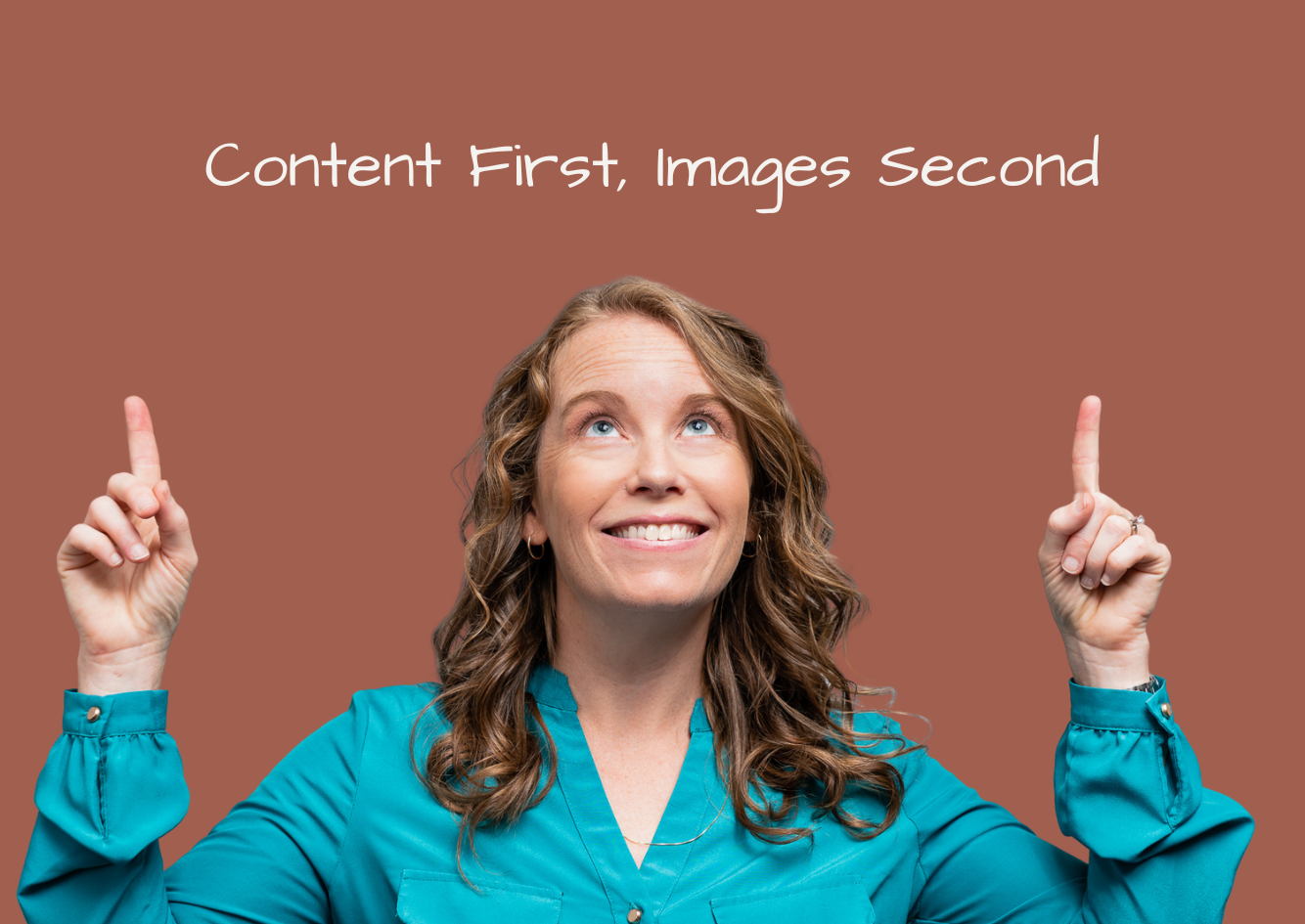Content First, Images Second: A Guide to Choosing Images That Support Your Message

Compelling images on your website can inspire and captivate your audience. However, we can’t forget that a great website requires more than just visual appeal. Websites must also provide valuable content and functionality to their users.
That’s why we believe a balanced approach is usually the way to go. Incorporating attractive images that support your brand’s personality and values without overshadowing other important content can help you achieve the best results for your website.
Tips for Using Images Effectively
Your No. 1 priority is to focus on the information that users actually want to see.
Service-oriented organizations benefit greatly from incorporating relevant images into their websites — for example, a renovated building, the community you work with, members of your team working on a project together. These are images that show website visitors what you do, how you work, and the quality of your work.
Just like in e-commerce, where product photos are essential for helping users understand your products, images of your work and the people behind your organization help website visitors understand what you do. The key is to select images that support your organization’s message and goals while also resonating with your target audience.
And not all photos are created equal. Users tend to ignore stock photos of generic people. Instead, they want to see real people in engaging experiences that meet their needs.
There’s even research to back this approach up. Eye-tracking studies have documented a dramatic gap in how users approach website images:
Some types of pictures are completely ignored. This is typically the case for big feel-good images that are purely decorative.
Other types of pictures are treated as important content. Photos of products and real people (as opposed to stock photos of models) often fall into this category.
By focusing on offering engaging experiences and meeting users’ needs, you can create a website that is both visually appealing and informative.
Follow these steps to find the right balance:
Identify and prioritize all the goals of your webpage, including user goals and business goals (such as brand goals). Is your webpage mainly a marketing tool to build your brand? Or do most visitors already know about your organization or industry and are looking for specific content or functionality?
Select images that align with your goals. Keep in mind that the purpose of your website is not solely to showcase images. The images you choose should support the purpose of your website.
Choose visually striking images that capture attention. Once you’ve determined which types of images relate to these goals, you can focus on selecting the most compelling images you can find.
What’s Your Brand (and Who Do You Cater To)?
There are no right or wrong brand values, and they’re important to consider when selecting your photographs. Consider the following list and select three or four values your company identifies with.
Friendly
Extroverted
Clever
Spiritual
Generous
Thoughtful
Edgy
Sarcastic
Witty
Fun
Loyal
Imaginative
Realistic
Glamorous
Daring
Zen
Inclusive
Humble
Quirky
Helpful
Insightful
Transformational
Strong
Dedicated
Willing
Motivated
Abundant
Accessible
When you’re selecting your photographs, ask yourself how your brand values are reflected in the images you choose. It’s also important to consider your audience. If you’re a real-estate company specializing in middle-class customers, showing an Italian villa won’t do you any favors.
We also encourage the use of diversity in photos (when it makes sense). By prioritizing diversity and inclusivity in your images and including a range of skin tones, body shapes, abilities, and gender identities, you can expand your audience and make them feel seen and valued.
Why Settle for Stock When You Can Snap Your Own Shots?
With the rise of smartphones and DSLR cameras, we now have the power to take amazing photographs ourselves. Don’t be afraid to showcase your own photography skills or hire a professional photographer to capture your unique business. We believe in the value of original photography to truly capture the essence of your organization. We love to see pictures of you and your work, whether it’s what you accomplished or a behind-the-scenes shot.
Of course, stock photos can also be a valuable resource when used correctly. However, it’s important to be selective when browsing through them. Rather than settling for generic and overused images, take the time to search for specific phrases and keywords that align with your vision. It may require some effort, but the end result will be well worth it!
Business people shaking hands, smiling families in front of a white background, hands holding a globe, people jumping in the air with excitement — these are just some examples of overdone images on the internet. Do yourself and your audience a favor by steering clear of pictures that appear unnatural, unrealistic, and clearly staged.
And last but not least, don’t compromise on quality. A website with poor-quality images can appear unprofessional and unappealing. High-quality images, on the other hand, can make your website stand out and provide a more personalized experience for your users.
Say Cheese! Here’s Where to Get Your Next Image
With so many images available on the internet, it’s tempting to grab any photo that catches your eye. However, using copyrighted images without permission can lead to serious legal issues. But don’t worry, there are a number of fantastic websites that offer high-quality, free, or no-copyright images. These sites make it easy to find and use stunning visuals without any legal headaches!
PixaBay
StockSnap
Unsplash
NegativeSpace
GratisPhotography
Flickr.com/commons
You can also license photos from Adobe Stock Images, Getty Images, or any number of stock photography companies.






